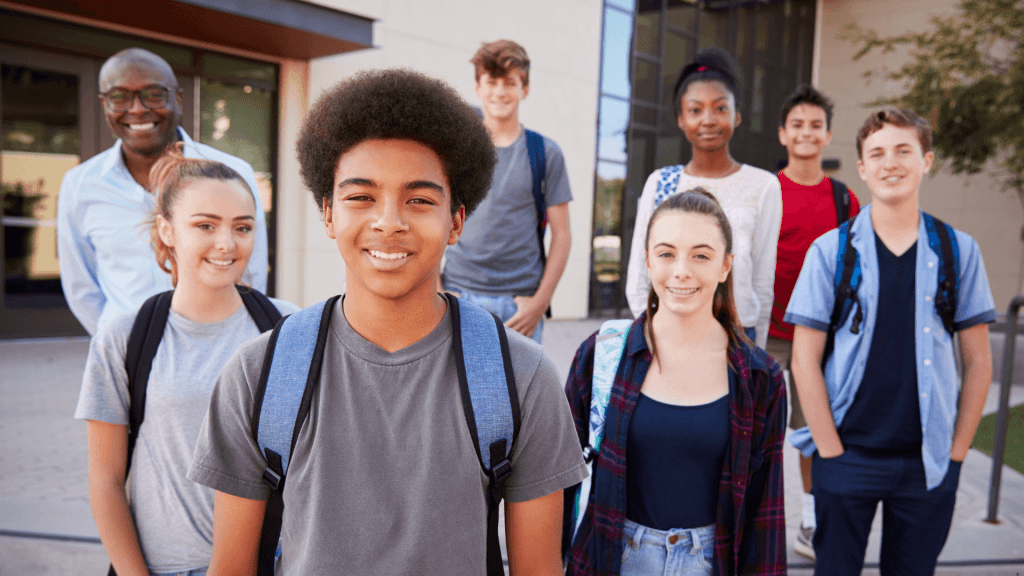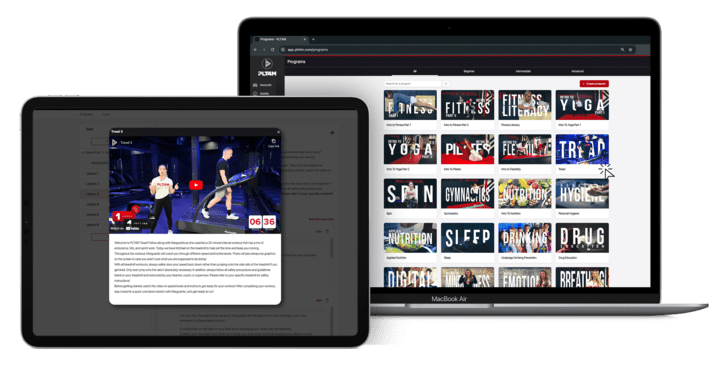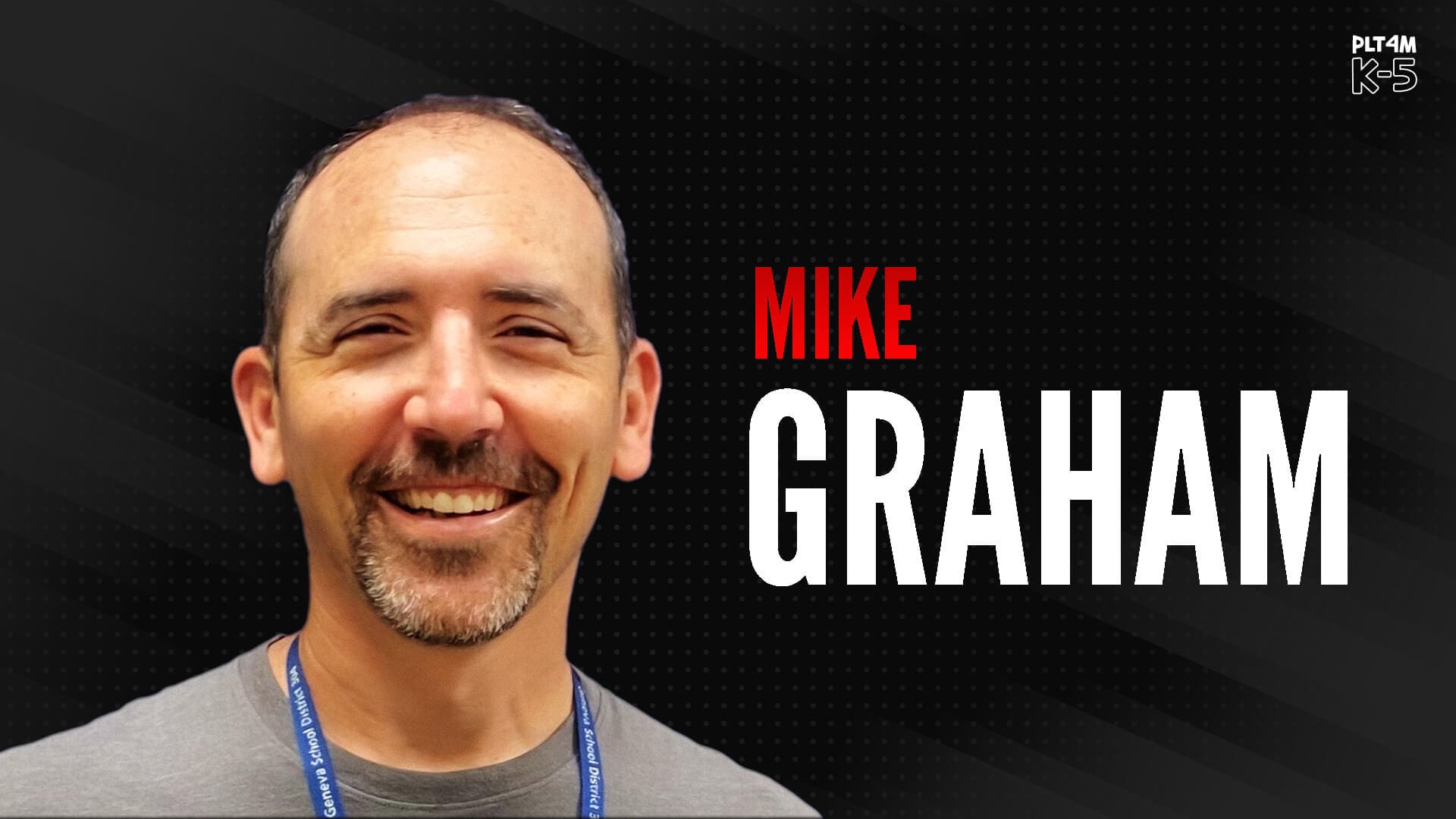With the rise in awareness and concern around bullying, it’s crucial that students all operate with a shared definition and understanding of what bullying is in all its forms—physical, verbal, social, and cyber. A common understanding helps ensure that everyone can recognize bullying behaviors and respond effectively. By being informed and proactive through anti bullying lesson plans, we can work together to prevent bullying and create safer, more supportive environments for everyone.
With resources from StopBullying.Gov to help all students speak a common language about bullying and bullying prevention, we can work to build student awareness and stop bullying. In this article, we will explore resources within “Stop Bullying Lesson Plans” and additional information and opportunities to encourage our young people to be kind, caring, and compassionate in schools.
What We’ve Learned About Bullying
Below are some key facts and information from StopBullying.Gov on what we have learned about bullying and the importance of stop bullying lesson plans.
Bullying affects all youth, including those who are bullied, those who bully others, and those who witness bullying. The effects of bullying may continue into adulthood.
There is not a single profile of a young person involved in bullying. Youth who bully can be either well connected socially or marginalized, and may be bullied by others as well. Similarly, those who are bullied sometimes bully others.
Solutions to bullying are not simple. Bullying prevention approaches that show the most promise confront the problem from many angles. They involve the entire school community—students, families, administrators, teachers, and staff such as bus drivers, nurses, cafeteria and front office staff—in creating a culture of respect. Zero tolerance and expulsion are not effective approaches.
Bystanders, or those who see bullying, can make a huge difference when they intervene on behalf of someone being bullied.
Studies also have shown that adults can help prevent bullying by talking to children about bullying, encouraging them to do what they love, modeling kindness and respect, and seeking help.
Stop Bullying Lesson Plans
It is important to reiterate that bullying solutions are not simple. Instead it takes many different approaches and angles to help address bullying.
And it is important that we address bullying! 1 in 5 students have experienced bullying in some capacity. Therefore, PLT4M also believes in a multi-pronged approach. First, let’s explore a sample lesson plan that helps define different elements of bullying. Below is the lesson “What Is Cyberbullying” from the three-part Stop Bullying series offered within PLT4M:
Example Lesson: What Is Cyberbullying?
Cyberbullying is bullying that takes place over digital devices like cell phones, computers, and tablets. Cyberbullying can occur through SMS, Text, and apps, or online in social media, forums, or gaming where people can view, participate in, or share content. Cyberbullying includes sending, posting, or sharing negative, harmful, false, or mean content about someone else. It can include sharing personal or private information about someone else causing embarrassment or humiliation. Some cyberbullying crosses the line into unlawful or criminal behavior.
The most common places where cyberbullying occurs are:
- Social Media, such as Facebook, Instagram, Snapchat, and Tik Tok
- Text messaging and messaging apps on mobile or tablet devices
- Instant messaging, direct messaging, and online chatting over the internet
- Online forums, chat rooms, and message boards, such as Reddit
- Online gaming communities
Special Concerns
With the prevalence of social media and digital forums, comments, photos, posts, and content shared by individuals can often be viewed by strangers as well as acquaintances. The content an individual shares online – both their personal content as well as any negative, mean, or hurtful content – creates a kind of permanent public record of their views, activities, and behavior. This public record can be thought of as an online reputation, which may be accessible to schools, employers, colleges, clubs, and others who may be researching an individual now or in the future. Cyberbullying can harm the online reputations of everyone involved – not just the person being bullied, but those doing the bullying or participating in it. Cyberbullying has unique concerns in that it can be:
Persistent – Digital devices offer an ability to immediately and continuously communicate 24 hours a day, so it can be difficult for children experiencing cyberbullying to find relief.
Permanent – Most information communicated electronically is permanent and public, if not reported and removed. A negative online reputation, including for those who bully, can impact college admissions, employment, and other areas of life.
Hard to Notice – Because teachers and parents may not overhear or see cyberbullying taking place, it is harder to recognize.
Cyberbullying Tactics
It is important to understand how youth are cyberbullied so it can be easily recognized and action can be taken. Some of the most common cyberbullying tactics include:
- Posting comments or rumors about someone online that are mean, hurtful, or embarrassing.
- Threatening to hurt someone or telling them to kill themselves.
- Posting a mean or hurtful picture or video.
- Pretending to be someone else online in order to solicit or post personal or false information about someone else.
- Posting mean or hateful names, comments, or content about any race, religion, ethnicity, or other personal characteristics online.
- Creating a mean or hurtful webpage about someone.
- Doxing, an abbreviated form of the word documents, is a form of online harassment used to exact revenge and to threaten and destroy the privacy of individuals by making their personal information public, including addresses, social security, credit card and phone numbers, links to social media accounts, and other private data.
Protect Yourself from Cyberbullying
Bullying does not always happen in person. Cyberbullying is a type of bullying that happens online or through text messages or emails. There are things you can do to protect yourself.
Always think about what you post. You never know what someone will forward. Being kind to others online will help to keep you safe. Do not share anything that could hurt or embarrass anyone.
Keep your password a secret from other kids. Even kids that seem like friends could give your password away or use it in ways you don’t want. Let your parents have your passwords.
Think about who sees what you post online. Complete strangers? Friends? Friends of friends? Privacy settings let you control who sees what.
Keep your parents in the loop. Tell them what you’re doing online and who you’re doing it with. Let them friend or follow you. Listen to what they have to say about what is and isn’t okay to do. They care about you and want you to be safe.
Talk to an adult you trust about any messages you get or things you see online that make you sad or scared. If it is cyberbullying, report it.
How to Deal with “Haters”
What is a “Hater?”
“Hater” is a label used to refer to people who use negative and critical comments and behavior to bring another person down by making them look or feel bad. These hurtful and negative comments can be delivered in person, online, or in texts and apps. Often, the comments and behavior are repeated over time. Haters are often anonymous (especially online) but they can also be acquaintances, peers, or people who were once considered friends. Hateful, critical behavior is another form of bullying or cyberbullying. Like bullying, hater behavior is something that a person does – it is not who they are, and it can be changed.
Often, haters pick on people whom they perceive as being different from themselves. Being the focus of negative and critical comments can be upsetting and trigger feelings of anger, hurt, and confusion, and cause the person being criticized to question their self-worth and behavior. If the negative comments are posted online, it can also make someone afraid to use their social media accounts or feel ashamed of what is happening there.
Many children and teens don’t want to be a part of negative behavior like name calling, criticizing, bullying, and cyberbullying. Dealing with haters isn’t that different from dealing with bullying and cyberbullying. Teens who feel overwhelmed by all the drama on social media will often unfriend or unfollow people online to disengage.
How to Deal with Haters
Ignore it. Walk away. Don’t react or respond to negative comments. If it continues, there are other things you can do. If someone threatens you, report it to a parent, teacher, or other trusted adult!
Block online haters. If someone is making negative or hateful comments on your posts or account, or is cyberbullying, block them. If they’re threatening you, tell your parents, report it to the platform, and take screenshots.
- How to report things on Facebook
- How to report a post on Instagram
- How to report abusive behavior on Twitter
- How to report offensive content on Tumblr
- How to report abuse on Snapchat
Be kind and respectful, even to haters. It shows that you’re in control of your emotions and that you aren’t letting negativity bring you down.
Stick with supporters. Having a friend nearby if you think you might encounter a hater not only makes it less likely that an incident might happen, but also means you’ll have positive reinforcements just in case.
Remind yourself that comments from a hater are a reflection of them and aren’t really about you. People who feel good about themselves don’t need to put others down.
Understand criticism can be a sign of pain. People sometimes lash out because they have other life struggles. Negative comments may have nothing to do with you.
Acknowledge your feelings. Talk to a trusted adult or friend and get some encouragement and support.
Keep being you. Keep moving forward, pursuing your interests, and being who you are.
1) In a few sentences, define the term cyberbullying: 2) What are common ways that people experience cyberbullying? 3) True or False – Cyberbullying isn’t as bad as regular bullying. | |
More Than Stop Bullying Lesson Plans
Having common understanding about bullying is important.
But to reduce or stop bullying, it will take more than lesson plans that simply define terms and statistics.
If you are in search of additional resources, activities, and curriculum, check out some popular options to incorporate within SEL and Health Curriculum below:
Also check out other options and opportunities for students from StopBullying.Gov:
The Federal Partners in Bullying Prevention invite you to take action to make a difference in your community! By following the steps in this youth engagement toolkit, you can join other youth leaders across the country and the Federal Partners to organize a bullying prevention social and educational event.
- Youth Engagement Toolkit – PDF
- Use tools like the Youth Leaders’ Toolkit – PDF to work with younger kids.
- Read about how other teens have gotten involved.
Work with your school to contribute your views on bullying.
Bonus: Example Lesson Plan – Mindful Communication
In this mindfulness lesson, we explore mindful communication and practice the THINK method:
THINK: To help with your practice, a helpful acronym to use is THINK. When we get ready to talk, we can come back to this acronym to ask ourselves if what we are going to say fits the THINK model.
T: True
H: Helpful
I: Inspiring
N: Necessary
K: Kind
Key Takeaways On Stop Bullying Lesson Plans
Nationwide, 19% of students in grades 9–12 report being bullied on school property in the 12 months prior to the survey.
The following percentages of students ages 12-18 had experienced bullying in various places at school:
Hallway or stairwell (43.4%)
Classroom (42.1%)
Cafeteria (26.8%)
Outside on school grounds (21.9%)
Online or text (15.3%)
Bathroom or locker room (12.1%)
Somewhere else in the school building (2.1%)
Approximately 46% of students ages 12-18 who were bullied during the school year notified an adult at school about the bullying.
As statistics from StopBullying.Gov show, we need to address bullying in schools. Bullying lesson plans and other resources can help to create welcoming schools that and inclusive classrooms that support students being kind, empathetic, and more.
Together, students, teachers, families, and all key stakeholders can put a stop to bullying. And through bullying lesson plans we can begin to have the important conversations around this topic!





